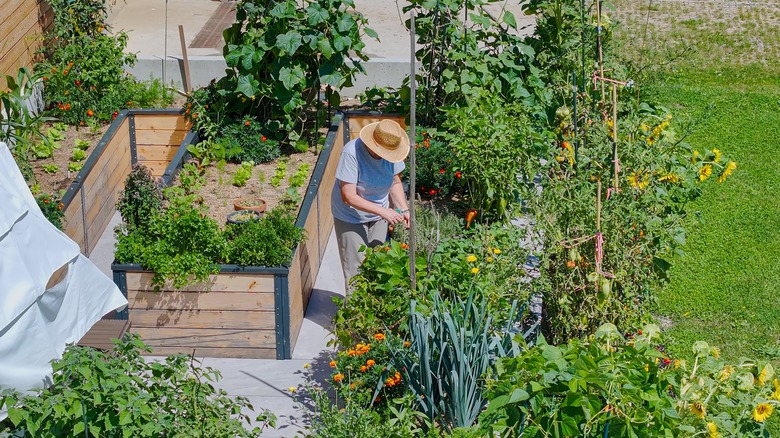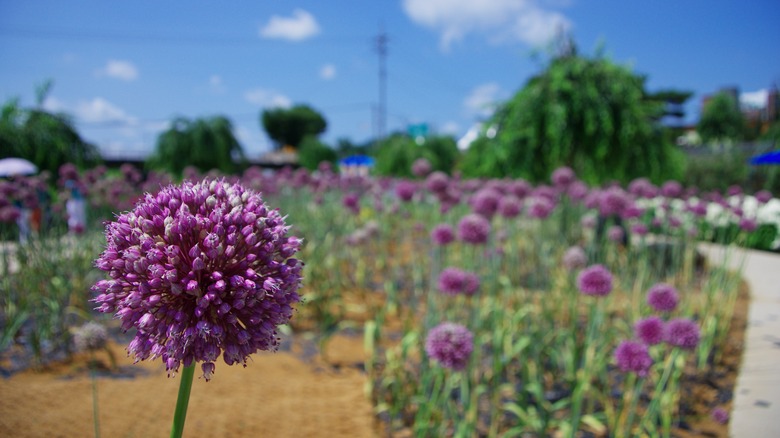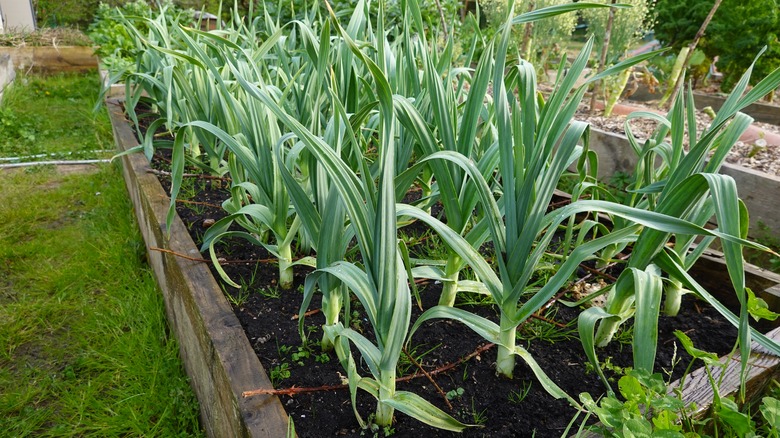The Low-Effort Garlic Plant That Also Produces Beautiful Blooms
When it comes to gardening, those who grow food gardens and those who grow flower gardens can sometimes end up feeling like they belong to separate factions. However, it's important to remember that there are many opportunities nature provides us with to grow plants that offer both delicious vegetables, fruit, or herbs and beautiful ornamental flowers. Exhibit A: elephant garlic (Allium ampeloprasum var. ampeloprasum).
You might be familiar with the giant elephant garlic bulbs you've seen at the grocery store, but the plant's gorgeous flowers are less well-known. This is possibly because of the fact that most gardeners remove the (edible) flower stalks to allow the plant to expend more energy on producing garlic. All the more reason to grow more elephant garlic plants, we say, some for flowers and some for food. If you're looking for a plant that produces both delicious vegetables (elephant garlic is actually a leek) and show-stopping flowers, this is the one for you.
How to grow elephant garlic
Growing elephant garlic (and growing your own garlic in general) is very easy. To begin, find a spot in your garden or on your patio that receives full sun exposure during the day. Then, all you need to do is obtain a bulb of elephant garlic and plant a single clove about 6 inches deep in rich, well-draining soil, with the pointed end up. Simply water the plant when its soil feels dry.
Elephant garlic grows shallow roots, which means it isn't good at competing with nearby plants for resources. For this reason, be sure to get rid of weeds in your garden or in the plant's pot as soon as you spot them. Plant your elephant garlic in the fall for optimal results. By next summer, you'll notice the plant's green foliage yellowing. This means it's time to harvest your garlic bulb. In the meantime, however, you can harvest the plant's flower stalks (called scapes) and eat them the way you'd eat asparagus. Or, if you're not focusing on growing enormous garlic, you can enjoy the globe-shaped purplish-pink blooms produced by the plant that can grow multiple feet tall.
Phase two: harvesting and storing elephant garlic
Planting and growing your elephant garlic is only half of the experience this vegetable has to offer. Much like gardening itself, growing elephant garlic can put the grower in the position of having to choose between focusing on showy flowers or tasty vegetables. Allowing the plant's scapes to reach their full height and flower will result in a drastically smaller garlic bulb. Therefore, a choice must be made. You can either grow elephant garlic primarily as an ornamental and allow it to reach its full 5-foot flowering glory or you can snip the scapes before they reach a foot tall and enjoy massive garlic bulbs.
Or, you could plant multiple cloves and enjoy the plant both ways. Either way, when you notice the plant's leaves yellowing after overwintering and awakening in spring, you can gently dig up your garlic. Unless you plan to eat the bulb immediately, you'll need to cure it by leaving it in a cool, dark, dry place for about a month. Once the trademark papery skin has formed, you can trim the bulbs' roots and store them as you normally would. If the plant's flowers are your focus, simply avoid removing the scapes and they will produce stunning purple flowers during spring and summer. You can still harvest the plant's garlic bulb when you tire of the flower, but it will be severely undersized and may not taste as flavorful.


